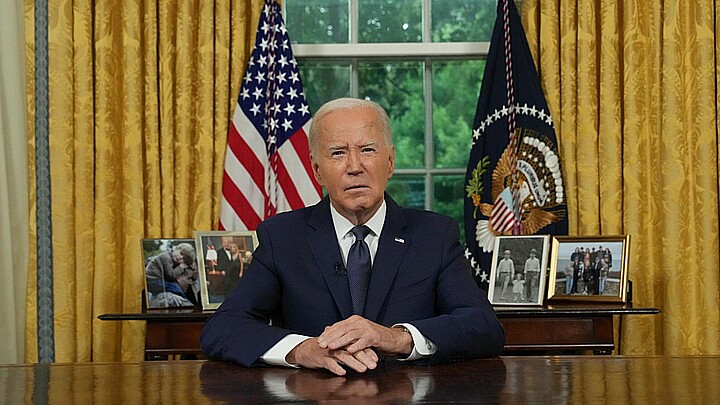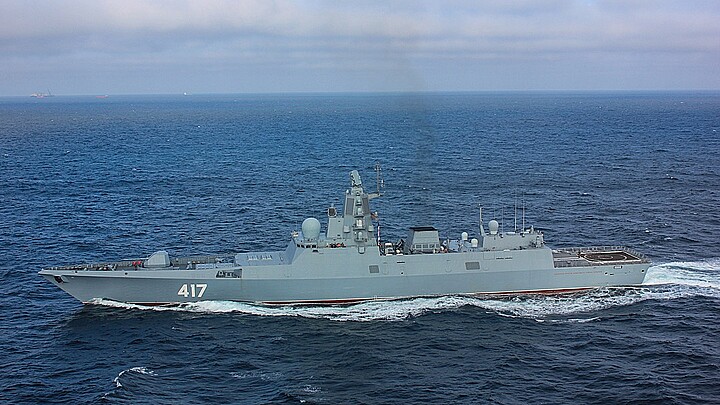Politics
Russia to deploy warships and jets to Latin America with expected destinations in Cuba and Venezuela, says U.S.
The upcoming Caribbean drills are part of an effort to flex Moscow’s power in the wake of losing several warships in its continued invasion of Ukraine, all part of a larger strategy to escalate the Kremlin’s military presence throughout the world

June 6, 2024 8:32am
Updated: June 6, 2024 11:05am
Just weeks after the United States approved a multibillion dollar aid package for military aid in Ukraine, the Kremlin has prepared to deploy military aircraft and warships to the Caribbean to engage in military drills, a senior official within the Biden administration told McClatchy and the Miami Herald.
The senior U.S. source, who was not identified, said that Washington expects the deployment of warships to travel to Cuba and Venezuela, all part of Moscow establishing a presence in Latin America. The drills, which will be surveilled by the U.S. military will include a “handful” of Russian warships and support vessels, two officials said.
The report comes several months after ADN America reported on Nov. 12 that Havana held a ceremony to honor a special Russian spy group, which also awarded a medal to Gen. Andrei Gushchin, who has been heading the Russian Ministry Defense Task Force in Cuba.
In February, the TASS state press agency also reported that Nikolay Patrushev, who was then Secretary of Russia’s Security Council was in Havana “to hold Russian-Cuban security consultations.”
Moscow’s military drills in Caribbean a “messaging tactic” to Washington
The Kremlin’s new military escalation comes on the heels of Russian leader Vladimir Putin warning that Moscow may take “asymmetrical steps” and provide long-range others to its allies in the Western Hemisphere in response to NATO allies sending arms to Ukraine.
Washington sent Kyiv the weapons as part of a tactic to help Kyiv launch strikes inside Russia and shield the Ukrainian city of Kharkiv, an act which also precedes a NATO naval exercise scheduled for this Friday.
The exercise, BALTOPS 24, will involve about 20 member states, including the United States, will be part of an expansive NATO naval exercise in the Baltic region
According to a March report from the Ukrainian armed forces, Moscow lost one-third of its Black Sea fleet during the past two years since its illegal invasion effort began.
The Herald, McClatchy and the Associated Press said that their U.S. sources were confident the new Latin American based drills were part of an effort to flex its power in the wake of losing several warships in its continued invasion of Ukraine, all part of a larger strategy to escalate Moscow’s military presence throughout the world.
According to one senior Biden administration official, the military exercises pose “no direct threat to the United States,” and that Moscow is using the maneuver as a “messaging tactic”” to Washington.
Potential port calls to Cuba and Venezuela
As part of its Caribbean based military drills, the administration official also said The White House expects the Kremlin will “conduct heightened naval and air activity near the United States,” potentially including directing warships to Cuba and Venezuela.
The two communist countries have shown stalwart support for Putin and hosted naval ships from Russia in the past, the official said.
One reason U.S. officials expect the Russian navy to make a port call in Cuba is “at least in part” because of an incident that occurred last year when an American nuclear submarine was docked at Guantanamo Bay Naval Base, drawing political fire from the Cuban military dictatorship, a second U.S. official said.
According to the officials, Russia’s Caribbean drills are expected to escalate to other areas of the hemisphere including on the Pacific side of Central and South America.
“Their port calls in the Western Hemisphere are less frequent,” the official said. “They’re less frequent, of course, because Russia has limited capacity for this kind of sustained power projection. And so that’s a factor. But this is something they’re doing, and clearly, they are unhappy, needless to say, with our support for Ukraine and support for our NATO allies.”
“We’re tracking this closely,” the official reportedly said. “We’re trying to get ahead of this.”
Putin’s history of projecting military power
Since Vladimir Putin came to power in 1999 amid the Second Chechen War, he has gradually escalated military encounters with U.S. warships and combat jets.
Russia dispatched warships to the Western Hemisphere every year from 2013 to 2020 and sent warplanes to penetrate the U.S. Air Defense Identification Zone (ADIZ), an internationally recognized coastal area designed to give countries a buffer zone.
Jets crossing into a country’s ADIZ are supposed to give notice to that country’s civil air authorities before inching closer to their international waters.
For several years, Russia has sent its combat jets into situations where it has penetrated the U.S. ADIZ along the Pacific coastline, and even skirted American warships and teased its warplanes with close encounters in other theaters such as the Middle East.
Moscow’s upcoming deployment will be the Kremlin’s first coordinated air and sea combat exercise of since 2019, the official noted.
“We expect that, as is predictable, the Russians will amp up the information space with this, both to make a point and to unsettle us,” the official explained. “We’re not particularly concerned. It’s something that they’ve done before. It’s messaging for the Russians.
“This is about Russia showing they are still capable of some level of naval power projection,” the official added. “We should expect more of this activity going forward.”
Moscow did not give advance notice of the drills to the United States, raising concerns in Washington.
“Ships, of course, are observable, so they kind of don’t have to,” the official explained.
The White House informed members of Congress about the upcoming drills on Wednesday and the official reportedly said that the U.S. Navy will track the Russian naval exercises closely.
The Russian ships are expected to will remain in the Latin American region throughout the summer.










